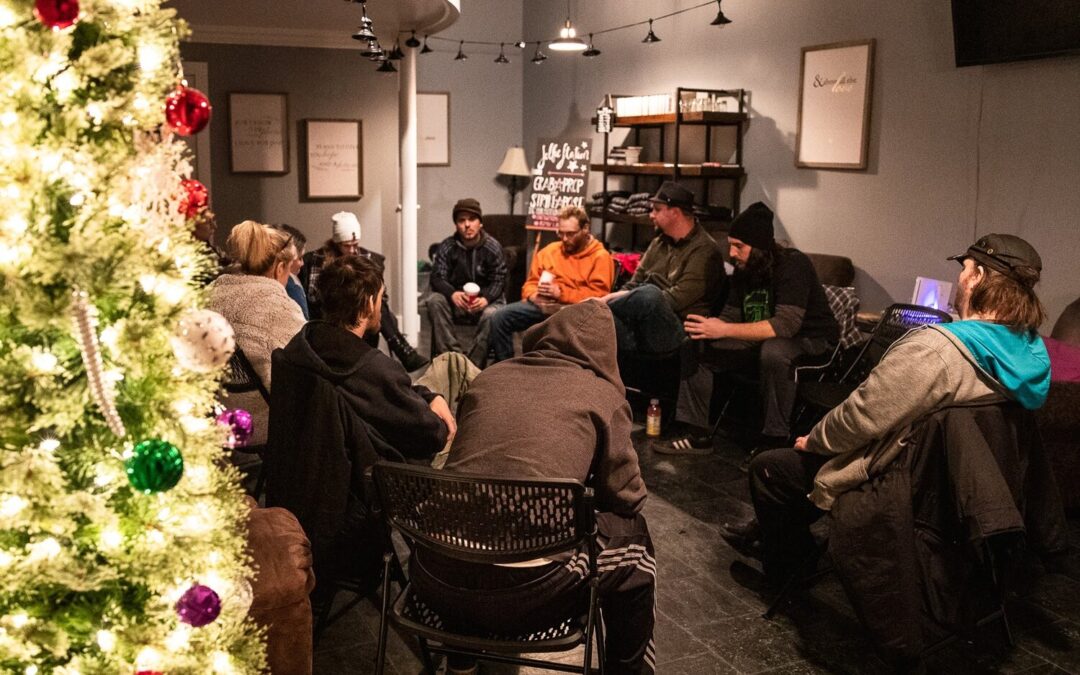None of us will soon forget 2020, the year that changed seemingly everything about our day-to-day lives. From school and workplace closures to social distancing and mask-wearing, it’s been a time of obstacles, challenges, and new experiences for everyone.
With so much attention on COVID-19, many outside the fields of behavioral health and addiction treatment have lost sight of another massive public health problem: a worsening national crisis surrounding substance use and mental health. The coronavirus pandemic has created a “perfect storm” for the growth of this crisis, with more despair and substance use in our communities and more barriers for those seeking treatment.
For many people across the U.S., the pandemic has resulted in joblessness, financial hardship, and loneliness. The effects of this turmoil have manifested in a variety of concerning ways. Alcohol sales, for example, jumped over 40 percent in-store and over 300 percent online at the onset of the pandemic. In June, 40 percent of U.S. adults reported struggling with mental health or substance use. In August, new data revealed that opioid overdose deaths had risen by 18 percent nationally.

Making matters worse, patients have faced more challenges accessing treatment than ever before. The pandemic forced the closure of many community spaces and the cancellation of group recovery meetings, further exacerbating social isolation. This isolation not only drove more substance use but also increased mortality, with fewer people available to administer lifesaving naloxone (NARCAN®) treatment in overdose situations. Many organizations have also faced financial difficulties and budget cuts, reducing their ability to deliver services to those who need it most.
It’s clear to those of us in the field that our work has never been more important. As we move into 2021, and more repercussions from the pandemic emerge, here are four major opportunities we see for community organizations and treatment providers to better serve their communities by breaking down barriers to care.
MEET PEOPLE WHERE THEY ARE IN THEIR JOURNEYS
Anyone who has worked in addiction treatment and recovery knows that each person’s path to recovery is unique. Everyone is in a different place in their journey.
Historically, many treatment providers have been so focused on achieving 100 percent sobriety that they’ve lost sight of how their members grow and evolve. While abstinence-based approaches work for some, we believe that everyone is unique and that there are many paths to recovery.
The challenges of physical dependence and numerous other complicating factors and social determinants of health mean that not everyone will achieve their goals immediately. Others may find success for a while but struggle with triggers and stressors in their lives that lead to relapse. Organizations that embrace these challenges as growth opportunities will serve their members best.
As service providers, our goal is to help our members—not to penalize them for trying and failing. Just like we wouldn’t stop delivering medical care to a person with diabetes who struggled to stick to a dietary regimen, we don’t believe in kicking people out of our programs just because they’ve struggled to fully meet all of their recovery goals.
Not only is this the most humane approach, but it’s also based on a wealth of evidence that harm reduction strategies improve health and reduce health disparities. When we work to reduce adverse consequences of drug use in parallel with other treatment approaches, we give people the support and safety they need to find the way that works best for them. When we take an all-or-nothing approach, people get left behind.
EXPAND VIRTUAL AND DIGITAL CARE OPTIONS TO AUGMENT IN-PERSON CARE
One of the most promising developments we’ve seen in recent months is the rapid expansion of telehealth for both medical and behavioral health care.
Seeing the urgent need for remote care at the onset of the pandemic, government regulators eased requirements in order to accelerate the adoption of telehealth solutions. Across the country, community organizations and treatment providers have rapidly shifted to remote service options, whether moving in-person gatherings to video conference platforms or expanding existing virtual communities and events.
At Better Life Partners, our medical and behavioral health treatment platform had already operated through a combination of in-person and telehealth care, and we were able to rapidly shift to a primarily remote care model in the early days of the pandemic, ensuring our members received essential treatment services while minimizing potential exposures to coronavirus.
Virtual care has been vital in maintaining continuity of care, but in-person access remains important to keep members engaged and serve those with limited technology access. We’ve trained our community health coordinators, so they can safely work with members and community partners while minimizing risk of virus transmission. We adapt to local conditions and the needs of our partners, while working to ensure that the people we collectively serve don’t fall through the cracks.
Organizations will need to continue seeking these types of innovative options for their patients and clients long after the pandemic ends. For members of the community who are high risk, have anxiety or mobility issues, or lack transportation, virtual and digital care can literally meet them in their own living rooms. Combining this virtual care with in-person access optimizes around individual needs and improves outcomes.

Better Life Partners members meeting for supportive group therapy in 2019. During the pandemic, we’ve shifted to a primarily remote care model.
BUILD INCLUSIVE COMMUNITIES THROUGH PARTNERSHIP
Our understanding of substance use as a disease has evolved greatly in recent decades. What was once sometimes seen as an issue of character or willpower is now understood to be substance use disorder (SUD), a chronic medical condition. But according to the 2015 National Survey of Drug Use and Health, only about 10 percent of people with substance use disorders receive care and treatment.
Stigma is one of the many reasons. When people with SUD fear the judgment of their friends, neighbors, and treatment providers, they are less likely to seek the care they need. Community organizations and healthcare providers can be on the front lines in combating this stigma by fostering inclusive communities. By treating our members as human beings, we demonstrate understanding and respect. The language we use is also important. When we dehumanize people as “addicts” or refer to a positive drug test result as “dirty,” we reinforce stigma. Changing our language isn’t about being politically correct; it’s about breaking down one of the major reasons people don’t seek the medical and behavioral care they need.
Another major hurdle we see in patients deciding whether to seek care is the perceived burden and risk of a new care setting. When there are too many unknowns, people are less likely to seek treatment and less likely to follow through on their recovery goals. Strong partnerships between treatment providers and local organizations can break down this barrier.
Community is much more than just a hometown, a familiar neighborhood, or a local haunt. It’s a feeling of connection, comfort, and shared experience. From food pantries to faith-based organizations to community centers, many local service providers have built a strong sense of community with their clients. These communities can be extremely valuable in helping people with substance use disorders reach their recovery goals by providing a foundation of inclusion and trust.
In our organization, we’ve built our operating model around this philosophy, partnering with community-based organizations in the places our members live and receive other services. Members are more likely to seek care when it’s recommended by someone they trust, and they get more support and are better positioned to thrive when they receive care in a place that’s comfortable and familiar.
Strong partnerships can also expand access to care. By partnering with treatment providers, community organizations with tight budgets can expand their service offerings to include more of the services their members need. Creating more access points across the community leads to more members receiving care.
When that care is delivered through an inclusive community, it also builds word of mouth. When we foster feelings of love and respect—and when members start talking about how well they’ve been served—we can reach more people who need care.
EMBRACE AN INTEGRATED “WHOLE-PERSON” APPROACH TO CARE FOR THE UNDERSERVED
Substance use and mental health conditions are critical components to overall health and wellness. Too often, though, treatment is siloed from other aspects of an individual’s needs. An integrated care plan that addresses medical, social and behavioral determinants of health is an evolution that is required for high-value care into the future. Additionally, underserved communities often lack access to services, exacerbating disparities in health equity.
At Better Life Partners, we’ve built technology in lockstep with our multi-specialty practice of physicians, counselors, care managers, and community health coordinators. This combination of software, automation, and analytics allows us to deliver reliable care efficiently and at scale, and to expand access to underserved communities.
Partnership is a core component of our model—so much so that it’s in our name. We work with community-based organizations and local health care providers to coordinate and ensure gaps in care are solved and closed. Long after the COVID-19 pandemic, one of the greatest challenges for our industry will continue to be improving access, whole-person care, and health equity for the underserved. By working as collaborative partners, we see tremendous opportunity to dramatically improve the lives of the people we collectively serve.
LOOKING FORWARD TO 2021
While the coming year brings great hope for vaccines and the end of the coronavirus pandemic, our nation’s substance use and mental health crisis is far from over. Community organizations and treatment providers can play a leading role in tackling this epidemic by investing in telehealth solutions, partnering to offer community-based care, embracing destigmatized and evidence-based approaches to care, and meeting people where they are in their recovery journeys. Together, we can make a difference in millions of lives.
Adam Groff, M.D. is co-founder of Better Life Partners. At Better Life Partners, our mission is to help millions of underserved individuals achieve healthier lives filled with belonging, love, and purpose. We provide evidence-based medical and behavioral interventions in a community-based delivery model, helping people achieve their health and recovery goals tailored to their individual needs. By partnering with local organizations, we provide a customized experience to people in need, meeting them in their communities, at the right time, with the right plan to achieve a better life. To learn more about partnership with our organization, please visit betterlifepartners.com.






